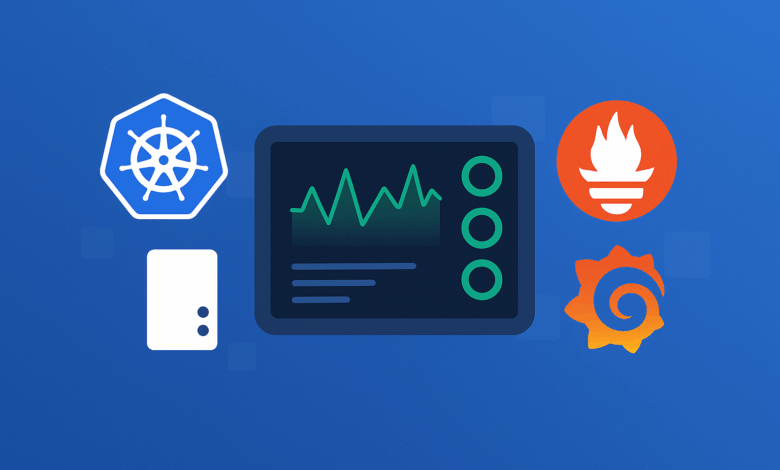Setting Up a Complete Monitoring Stack with Prometheus, Grafana, and Node Exporter on Kubernetes – Step-by-Step Guide

Monitoring your Kubernetes clusters is crucial to maintain reliability, detect issues early, and optimize performance. In this guide, you will learn how to set up a complete monitoring stack using Prometheus, Grafana, and Node Exporter on Kubernetes, step-by-step, with practical commands and explanations you can implement immediately.
Why Prometheus and Grafana?
- Prometheus: Powerful open-source monitoring and alerting toolkit designed for reliability and scalability.
- Grafana: Visualization and dashboarding platform to visualize your metrics from Prometheus clearly.
- Node Exporter: Collects Linux system metrics for Prometheus to scrape.
This stack enables you to monitor CPU, memory, disk usage, and Kubernetes metrics efficiently, making it ideal for DevOps workflows.
Prerequisites
- A Kubernetes cluster (Minikube, DigitalOcean Kubernetes, or any managed cluster)
- kubectl installed and configured
- Helm installed on your local system
Step 1: Add Prometheus Community Helm Repository
helm repo add prometheus-community https://prometheus-community.github.io/helm-charts
helm repo update
Step 2: Install Prometheus using Helm
We will install Prometheus and configure it to scrape metrics from the Node Exporter.
helm install prometheus prometheus-community/prometheus \
--namespace monitoring --create-namespace
Verify that Prometheus is running:
kubectl get pods -n monitoring
To access Prometheus UI:
kubectl port-forward svc/prometheus-server -n monitoring 9090:80
Visit http://localhost:9090 in your browser.
Step 3: Install Node Exporter
Node Exporter is already included within the Prometheus Helm chart, but you can deploy it separately if needed for advanced configurations:
helm install node-exporter prometheus-community/prometheus-node-exporter \
--namespace monitoring
Step 4: Install Grafana using Helm
Now, install Grafana to visualize your Prometheus metrics:
helm install grafana grafana/grafana \
--namespace monitoring
Get the Grafana admin password:
kubectl get secret --namespace monitoring grafana -o jsonpath="{.data.admin-password}" | base64 --decode ; echo
Port forward Grafana:
kubectl port-forward svc/grafana -n monitoring 3000:80
Access Grafana at http://localhost:3000 using username admin and the retrieved password.
Step 5: Connect Prometheus as a Data Source in Grafana
- Navigate to Configuration > Data Sources in Grafana.
- Click Add data source and select Prometheus.
- Set the URL to
http://prometheus-server.monitoring.svc.cluster.localif within cluster, or usehttp://localhost:9090if testing locally. - Click Save & Test.
Step 6: Import Dashboards
You can import community dashboards or create your own. For example:
- Go to Dashboards > Import in Grafana.
- Use dashboard ID
1860for Node Exporter Full Dashboard. - Select your Prometheus data source and import.
You will now see CPU, memory, disk, and network metrics visualized for your Kubernetes nodes.
Step 7: Setting Up Alerts (Optional)
Prometheus and Grafana allow you to configure alerts to notify your team via Slack, Email, or PagerDuty when metrics breach defined thresholds. Consider adding alerts for:
- CPU usage > 85%
- Memory usage > 80%
- Node down for > 5 minutes
These alerts will help you proactively manage cluster reliability.
Conclusion
You have successfully set up a complete monitoring stack with Prometheus, Grafana, and Node Exporter on your Kubernetes cluster. This stack will provide you with real-time insights into your infrastructure, improve your DevOps practices, and help in detecting and resolving performance issues early.
Next Steps
- Automate your monitoring stack deployment using Helmfiles or GitOps pipelines.
- Add Alertmanager for advanced alert routing.
- Explore Loki for Kubernetes log aggregation and correlation with metrics.




